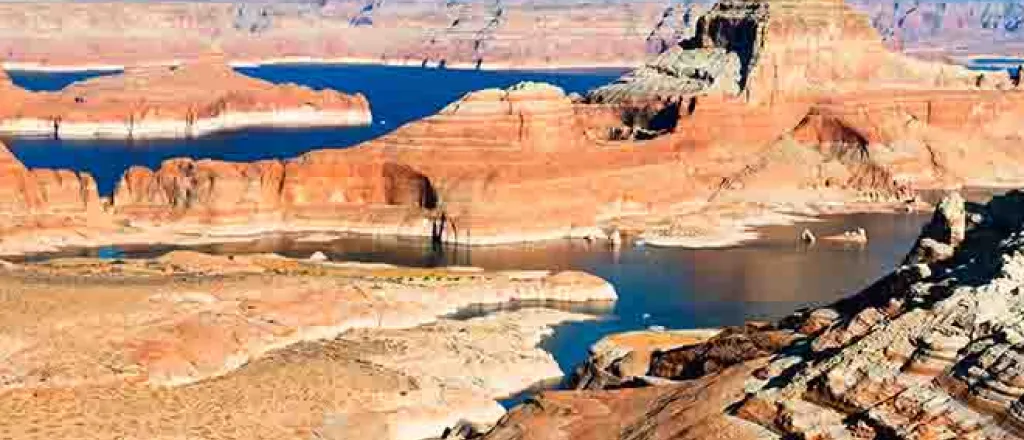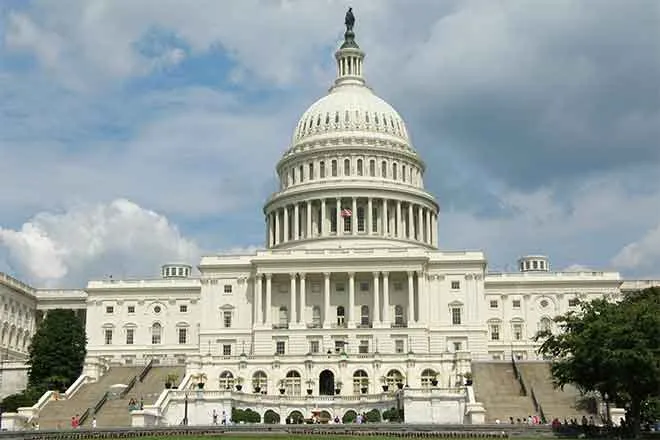
Water managers across drought-stricken West start negotiations in Las Vegas
This story originally appeared in the Nevada Current.
(Colorado Newsline) Nature offered the Colorado River Basin states a reprieve last winter after a heavy snowpack and generous rainfall saved the region’s two largest reservoirs from collapse.
But one good year won’t solve decades of drought in the West, and the deadline for a new set of rules to manage the Colorado River looms over seven states dependent on its flow.
Top water officials for the seven Colorado River Basin states met last week during this year’s Colorado River Water Users Association conference in Las Vegas. With a few more years of stability secured for the river, state representatives resumed negotiating a new compromise for how they will share — and cut back on — water use after 2026.
States will begin crafting their proposals by March of 2024 before finalizing a new agreement by the 2026 deadline. Negotiators acknowledged they have three options to decide how states will share the river’s waning water supply going forward: litigation, legislation or negotiation.
Negotiations are the preferred option, state water commissioners agreed.
“The only option that reduces the risk to our water users is a consensus solution. Anything else is taken out of our hands, likely by people who understand the situation much less than we do,” said Brandon Gebhart, Wyoming’s river commissioner. “Russian roulette sounds like an interesting, sometimes lucrative game, until it doesn’t work out for you any longer. That’s what the Supreme Court and the Congress is for us.”
The federal government has told states they will need to reduce water use on the Colorado River by 2 million to 4 million acre-feet per year to address the unresolved water shortfall and the effects of climate change. State water commissioners agreed that the longer it takes to compromise and conserve the water needed to keep the river stable, the more likely reservoir levels will continue to plummet, leaving states with fewer and fewer options.
The only option that reduces the risk to our water users is a consensus solution. Anything else is taken out of our hands, likely by people who understand the situation much less than we do.– Brandon Gebhart, Wyoming’s river commissioner
Lake Powell and Lake Mead — the two largest reservoirs in the nation — fell below critical thresholds in 2021 and 2022, triggering emergency cuts and federal action to protect the lakes.
“Tensions are seeping through. That’s good. It should be tense. These are serious things and these are serious people,” said John Entsminger, Nevada’s top water official Thursday.
Those tensions were reflected on the panel as water managers in the Upper Basin — Colorado, New Mexico, Wyoming and Utah — reminded other states that they don’t have structures on the scale of Hoover Dam and Glen Canyon to store their water and can only take what nature gives them.
Entsminger agreed the Lower basin states — Nevada, Arizona, and California — have long failed to live within the means of what the river provides. Year after year, Lower basin states have used nearly all their 7.5 million acre-feet Colorado River allocation compared to the 4.5 million acres-feet used by the upper basin states.
“We can’t accept something that continues to drain the system, that puts 40 million people at risk,” said Colorado’s river commissioner Becky Mitchell.
Lower Basin officials acknowledged that their overuse has outpaced the river’s supply and the need to significantly cut their use.
“There is a supply-demand imbalance in the Lower Basin,” said JB Hamby, California’s top negotiator and vice president of the Imperial Irrigation District. “Where we’re at in the Lower Basin is a recognition that we have to solve and own that supply-demand imbalance. It’s going to be tough. It’s going to be challenging. But it’s absolutely necessary.”
In recent months, California and Arizona have signed conservation agreements with the federal government, made possible thanks to massive federal funding.
During the conference, California water agencies committed to conserve up to 643,000 acre-feet of water through 2025 under an agreement with the federal government, more than double Nevada’s total annual water allocation. Federal water managers also announced they reached an agreement with the Quechan Indian Tribe to save up to 39,000 acre-feet of water in the reservoir through 2025.
Earlier this month, the Imperial Irrigation District — the Colorado River’s largest water user — signed an agreement with the federal government to conserve about 100,000 acre-feet of water in 2023, enough to support upwards of 300,000 single family homes for a year.
Arizona recently pledged to conserve up to 348,680 acre-feet of water in Lake Mead in 2023, and up to 984,429 acre-feet through 2026, in exchange for hefty federal funds.
Lake Mead water users have already conserved up to 348,680-acre feet of water in the reservoir this year — that’s more water than has been conserved in a single year over the past 30 years, according to federal officials.
Water conservation agreements signed this year between the federal government, states, and tribes will conserve more than 1.5 million acre feet through 2026, including up to 984,429-acre feet of water in Lake Mead through 2026.
Still, hydrologists say climate change will require more cuts to water use in the west in order to stabilize the river in the long-term. A Nevada study in 2022 estimated that about 1.5 million acre-feet of water is lost per year because of evaporation and transit loss in the Lower Basin, which remains unaccounted for in official counts.
State water officials say their new reality will only complicate negotiations, but Entsminger said that he still has hope that “compromise on this river system is still possible.”
“The one thing I can tell you with absolute certainty is that the post-2026 guidelines will deliver a messy compromise that will be judged harshly by history. That’s the cold reality,” Entsminger said.
Nevada Current is part of States Newsroom, a network of news bureaus supported by grants and a coalition of donors as a 501c(3) public charity. Nevada Current maintains editorial independence. Contact Editor Hugh Jackson for questions: info@nevadacurrent.com. Follow Nevada Current on Facebook and Twitter.
Colorado Newsline is part of States Newsroom, a network of news bureaus supported by grants and a coalition of donors as a 501c(3) public charity. Colorado Newsline maintains editorial independence. Contact Editor Quentin Young for questions: info@coloradonewsline.com. Follow Colorado Newsline on Facebook and Twitter.

















